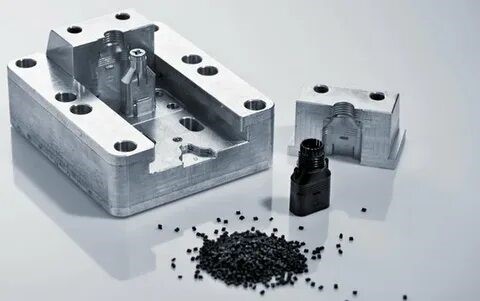Bringing a product idea to life is not a cakewalk! Manufacturers need to take care of speed, accuracy, and cost-effectiveness. Nowadays, rapid injection molding** has become a potent tool for quickly converting concepts into prototypes. This method can be revolutionary, whether you're a startup testing your first idea or an established business refining your next big product.
Let's explore five main reasons why rapid injection molding is perfect for prototyping and why it can be just what your next project requires.

Time is one of the most crucial components of product development. The time it takes to go from concept to prototype is significantly reduced using rapid injection molding. With this, businesses can test ideas in a matter of days rather than weeks because of efficient manufacturing cycles and rapid mold development. In competitive marketplaces where speed offers you a significant advantage, this offers you an essential edge.
Prototypes must closely match the final product in order for testing to be successful. Rapid injection molding produces reliable, premium products that closely resemble end-use functionality. Every prototype is dimensionally accurate and reproducible for dependable feedback and improvement due to the molds' precise digital model design.
While conventional molding is cost-efficient at scale, it’s generally too pricey for prototypes. Rapid injection molding fills this gap by using effective procedures and less expensive tools, which makes it perfect for small batches. It allows you to create multiple iterations without exceeding your budget.
You can gain important insights by testing a prototype with the precise material used in the finished product. Engineers and designers may experiment with various grades and performance characteristics for strength, flexibility, and durability since rapid injection molding can handle a large variety of thermoplastics.
Common thermoplastics used are:
● ABS (Acrylonitrile Butadiene Styrene)
● Nylon
● Polypropylene
● Polycarbonate
The transition to full-scale production is easy because the rapid injection molding prototype mirrors final manufacture. There aren't many adjustments needed throughout the shift because you're utilizing comparable tools and materials. This guarantees that your finished product fulfills requirements and cuts down on manufacturing delays.
No longer is prototyping a costly and time-consuming step in the development process. You may save money, time, and confidence with your design decisions using rapid injection molding. With its quick turnaround, precision, and material flexibility, this approach enables teams to innovate more quickly and intelligently.
Are you prepared to advance your prototyping efforts? For even more precise solutions, don't forget to explore CNC machining services.
How long does it take to complete rapid injection molding?
Depending on complexity and volume, it usually takes 7–14 days from design approval to part manufacturing.
Are all prototype types appropriate for rapid injection molding?
Yes, it is appropriate for the majority of prototype applications since it offers a wide range of part sizes, geometries, and materials.
Which sectors gain the most from this method?
The need for speed and accuracy in the consumer electronics, automotive, medical, and aerospace sectors greatly benefits these sectors.
Is it possible to employ rapid injection molding for finished goods?
Yes, particularly in low-volume production when cost-effectiveness and speed are essential.
What is the difference between rapid injection molding and 3D printing?
Compared to most 3D-printed items, injection molding offers greater accuracy and superior material qualities for functional testing.
Ready to accelerate your prototyping process? Contact UTT Mould today to discover how our rapid injection molding services can bring your designs to life efficiently and cost-effectively